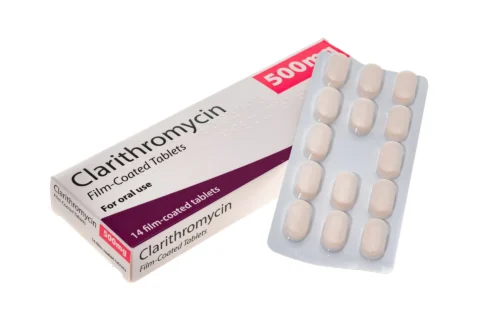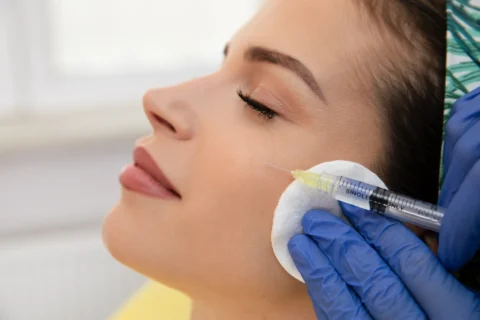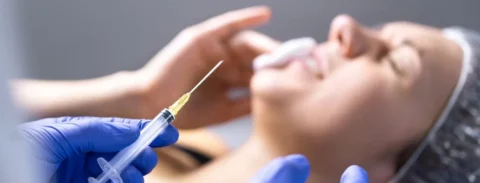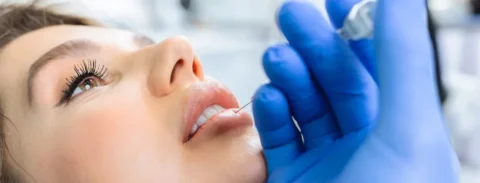Our faces are made up of 4 main structural elements: skin, muscle, fat, and bone. Many of the obvious indications of aging are caused by volume loss in these structures as we become older. Dermal fillers are injectable treatments used in medical offices to restore a more youthful appearance by helping to fill in wrinkles and restore lost volume. Most people tolerate treatment well, but like any medical procedure, there can be side effects, such as delayed onset nodules.
So how are delayed onset nodules from dermal fillers diagnosed and treated? Nodules caused by fillers often consist of a collection of substances with collagen surrounding it. If the filler is made of hyaluronic acid, it can be removed with hyaluronidase and will disappear in a few hours. Prior to dissolving the filler, antibiotics may be administered as a first line of treatment. But if you have a delayed hypersensitivity reaction, your doctor might prescribe steroids.
Delayed Onset Nodule From Dermal Fillers: Diagnosis and Treatment
The administration of the infection during injection, particularly through the skin bacteria, may be the cause of a delayed infection. Mycobacterial infections caused by wet gauze have also been reported in rare cases. This issue highlights how crucial filler hygiene is when using dermal filler injection treatments.
Often, isopropyl alcohol will be insufficient. Many procedures utilize chlorhexidine to lessen skin bacteria, but medical professionals must avoid using it near the eyes. Another effective antibacterial for the face is hypochlorous acid.
In order to avoid contaminating the dermal filler injection with bacteria, the provider must also take great care when using the needle or cannula tip to avoid touching their glove and to limit going in and out of the skin.
Other possible causes of a delayed infection reported in the research include dental abscesses, popping pimples, and acupuncture or an hyaluronidase injection procedure received after treatment. According to a review of the subject, there are three risk factors for the growth of biofilms: the product’s surface area, its shelf life, and insufficient sterilization methods.
Diagnosing Delayed Onset Nodules From Dermal Fillers
For a delayed onset nodule to be distinguished from other types of inflammatory nodules, there should have been an absence of inflammation or edema and a period of recovery. This could last for 3 to 6 months or just 3 to 4 days. However, you need a timeframe when everything appears to be normal because it’s a solid sign that it’s not a delayed reaction to the procedure.
Remember that if there is bruising after any injectable treatment, you could develop a lump on the treatment site. Even though a bruise is not reactive, it can cause hardness and textural changes in the skin that feel lumpy.
So track down and try to remember when the affected area was calm and okay. And that’s the key feature a provider will use to set it apart from procedural injuries. Additionally, it’s crucial to palpate the lump; if it feels tender, that may indicate that there’s some inflammation or edema present, as most filler isn’t tender on its own. As a result, that would be a good place to start to identify whether or not it’s inflammatory.
How to Treat Delayed Onset Nodules From Dermal Fillers
The use of dermal fillers poses the risk of complications, just like any medical operation; one of these potential risks is the development of inflammatory nodules with a delayed onset. In order to deal with delayed onset nodules caused by dermal fillers, a provider may utilize the following methods.
1) Hyaluronidase
Hyaluronidase is used in cosmetic medicine to remove dermal fillers that have been administered inaccurately, excessively, or unevenly. Aside from this, hyaluronidase may be used in an emergency situation when dermal fillers have been accidentally injected into an artery, obstructing the blood supply. Hyaluronidase injection treatment is administered close to the treatment area where the dermal filler needs to be dissolved.
The dermal fillers are instantly affected by the effect of hyaluronidase, which is very efficient. The fillers are metabolized and irreversibly dissolved. Keep in mind that hyaluronidase is ineffective on either permanent or semi-permanent dermal fillers.
Hyaluronidase is used, for instance, to dissolve dermal filler implanted near the eye region. Given the thinness of the skin in this area, excessive use of dermal fillers is clearly noticeable. Here, hyaluronidase is utilized to dissolve any excess filler or lump formation, enabling a subsequent injection of the filler with the appropriate positioning or volume.
2) Antibiotics
Hyaluronic dermal fillers have a very low frequency of problems; nevertheless, more recent fillers have been launched with a higher risk profile. Despite using aseptic procedures, there remains a tiny risk of infection whenever a needle is inserted into the body. If an infection does happen, it usually takes the form of superficial cellulitis and affects the skin and soft tissues close to the injection site. An oral antibiotic can be used to treat them very easily.
Even if the culture is negative, the initial step in treating a patient with suspected biofilm is to administer antibiotics while the cosmetic dermatology professional plans a course of action. Antibiotics should always be taken first; intralesional steroids can make the issue worse. When a patient with hyaluronic acid filler begins treatment with an antibiotic, the doctor may begin to use hyaluronidase or puncture the skin and press out the substance.
3) Steroids
It’s possible that your body is experiencing an allergic reaction to the dermal filler if the lump is uncomfortable or has a firm texture. This marks the beginning of granuloma formation and calls for a different strategy. Any blanching, discoloration, or excruciating pain should be reported immediately to a cosmetic dermatology professional.
Steroids, either oral or injectable, are used to treat a delayed inflammatory reaction. With the use of steroids such as arnica and bromelain, some patients report noticeably improving. For optimal outcomes, carefully follow the preoperative and postoperative instructions provided by the Provider.
Facial Filler Complications and Side Effects

It’s crucial that you discuss any issues that call for emergency care as well as all other concerns with your plastic surgeon. There’s no assurance that you will be pleased with your results, even though favorable results are anticipated from your procedure.
Dermal filler injections have the potential to create serious issues, so it’s crucial to be under the care of a board-certified plastic surgeon who’s aware of the dangers and is skilled and equipped to handle any problems that might arise.
Sometimes a single procedure may not be sufficient to produce the best outcomes. Over time, the majority of fillers do dissolve. You should think about undergoing the injection procedure periodically to maintain the results of the treatment.
In comparison to plastic surgery, fillers are non-invasive, reasonably affordable, and need little recovery time. But there could be risks, just like with other cosmetic procedures. The following are some possible dermal filler complications to be aware of before undergoing treatment.
Common Side Effects
Following a filler procedure, experiencing a few minor side effects is entirely normal. The skin punctures caused by the needles are frequently the cause of these inflammatory reactions. Bruising, redness, swelling, soreness, itching, bleeding, and pain at the injection sites are the most frequent adverse events. The majority of these mild to moderate post-treatment side effects subside in a matter of days.
Lumps and Bumps
Dermal filler procedures deliver instant results when you’re still in the cosmetic clinic, but the product needs time to fully absorb into the skin. You might see a delayed reaction of a few minor lumps and bumps where the product was administered as a result of this process. These bumps should go away in 7 to 10 days after the treatment.
Bruising and Swelling
Bruising and swelling are kept to a minimum by highly qualified and experienced medical professionals who have superior injection technique, dermal filler placement, and high-quality supplies. A little bit of swelling and bruising surrounding the treated area, however, is entirely normal and should be anticipated.
After the soft tissue filler treatment, patients must give the remaining swelling a full 14 days to go down. Before this point, providers are unable to make adjustments since they can’t see your real results while bruising and swelling are still visible.
Rare Adverse Events
There are less common side effects associated with dermal fillers, such as a delayed inflammatory reaction and infections. However, if they do develop, they can get worse if they aren’t addressed immediately. Unfortunately, these signs and symptoms are very similar to the common, moderate side effects that we have already discussed.
Working with an experienced and skilled practitioner who can distinguish between an immune reaction, an infection, and typical post-operative swelling is essential for this reason. The following are some of the rare side effects you should be on the lookout for after getting dermal fillers.
Allergic Reactions
Hyaluronic acid, which the body naturally produces, rarely results in serious adverse effects or allergic reactions. Hyaluronic acid fillers should only be used by those who have no history of severe allergic reactions, including anaphylaxis or a reaction to topical hyaluronic acid skin treatments. In order to rule out any potential allergic reactions to the filler, doctors may also advise a patch test before the treatment.
Depending on when they occur, allergic reactions can be categorized as either acute or delayed. As a result of an immune system overreaction to the filler, the initial hypersensitivity reaction happens minutes or hours after the injection. These are distinguished by formation of delayed nodules, swelling, a skin rash, and itching.
Anaphylactic shock, the most serious allergic reaction, is a medical emergency that needs to be treated right away. Delay responses, on the other hand, generally manifest 48 to 72 hours after injection. However, in extremely rare circumstances, this dermal filler complication can begin several weeks after treatment. The body reacts in this way when it recognizes the filler as a foreign substance and attempts to expel it.
Infections
Although it is uncommon, dermal filler treatments do carry a small risk of bacterial infection. The symptoms of a filler infection include unusual skin redness, soreness, discomfort, pus, or nodules. A few weeks after the filler dermal filler procedure, delayed nodules may appear at the injection site. Additionally, as opposed to allergic reactions, infections typically only affect one or two localized regions and gradually swell rather than affecting all injection sites.
Severe Side Effects
The most serious adverse reaction to hyaluronic acid dermal filler injections is vascular occlusion. Fortunately, this problem is extremely uncommon. When a blood vessel can no longer carry blood, vascular occlusion develops. This takes place when the needle used to inject the dermal filler penetrates and enters a blood vessel.
Vascular occlusion could cause an embolism to form, which could then move along the artery until it restricts blood flow. This dermal filler complication, although incredibly rare, can be dangerous. Scarring, tissue death, and vision loss are just a few of the devastating consequences of vascular occlusion.
Precautions Before Getting Dermal Fillers
When considering any type of medical procedure, whether it be plastic surgery or injectable treatments, be mindful of the risks the treatment might pose. While facial fillers are mostly risk-free, take the following precautions to avoid any side effects or other medical complications:
- Have a conversation with your cosmetic injector about your preferences, concerns, and desired aesthetic appearance.
- Be honest about your medications, medical history, health, and past cosmetic procedures as this will affect the outcome and possible adverse effects.
- Never be reluctant to inquire about your injectable filler provider’s education and experience.
- Only consult with a licensed physician for injectable treatments, such as dermal fillers and Botox injections.
- Never purchase any soft tissue filler products online because they may result in an infection, granulomas, or, in the extreme circumstances, tissue death, stroke, or blindness.
Get the Best Injectable Treatment Products at the Face Med Store
The key to a successful injectable filler treatment is choosing the proper doctor with an excellent injection technique to execute it. If you want to be sure that the dermatologist or cosmetic surgeon treating you is a board-certified, skilled professional, don’t be hesitant to ask about their education and qualifications. You can get natural, lovely, and secure results by making the necessary preparations and keeping your doctor and you both in the loop.
FACE Medical Supply takes pleasure in having established itself as a reliable business partner by offering equipment and supplies for cosmetic and medical clinics over the years. We provide top-notch medical supplies and equipment at affordable pricing, enabling our clients to increase the scope of their services without worrying about their bottom line. Feel free to contact us if you would like to learn more about what we do and our services.






